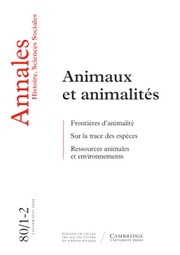No CrossRef data available.
Article contents
L'Urbanisation de L'Espace Danubien
Published online by Cambridge University Press: 26 July 2017
Extract
Entre 1500 et 1800, la population de l'espace danubien passe de 7 ou 8 millions à environ 17 millions d'habitants (tableau en annexe). La croissance, modérée au xvie siècle, marquée de ralentissements et de régressions au xviie, s'accélère au xviiie siècle, accentuant ainsi les différences régionales. Les migrations jouent dans ce phénomène un rôle non négligeable mais l'excédent, d'ailleurs fort variable, s'explique surtout par une natalité élevée et par la baisse inégale de la mortalité.
Summary
The Danube area, making up about 500,000 square kilometers, was characterized by slow demographic growth between 1500 and 1700, and sudden acceleration thereafter. This urbanization phenomenon is examined here at three historical moments using city population figures, the two tools of analysis being rank-size distribution and urban pyramids by large regions. The Danube area presents a certain unity for the first time when Vienna becomes its true capital, but its other particularity—the relative importance of small towns—Seems to work against unification. The urbanization process was not linear, corresponding in Bohemia and Austria to the opening up of towns, whereas in Hungary—especially in the great plains—to their being closed off the process thus repeated, though at a later date, the stages of Western Medieval development.
- Type
- Évolutions Économiques
- Information
- Copyright
- Copyright © Les Éditions de l'EHESS 1989


